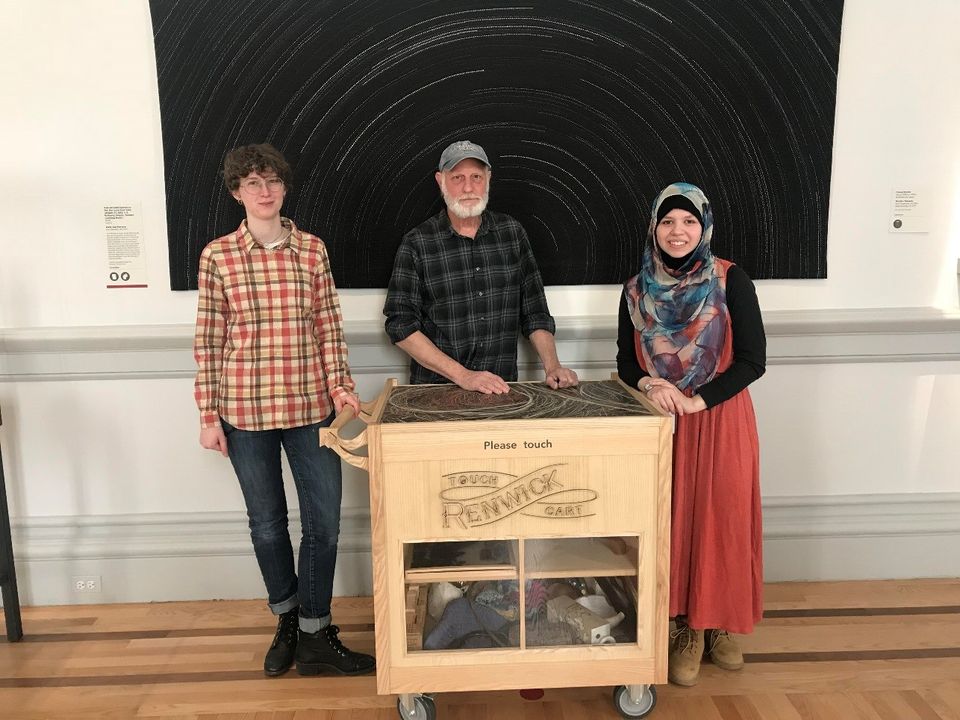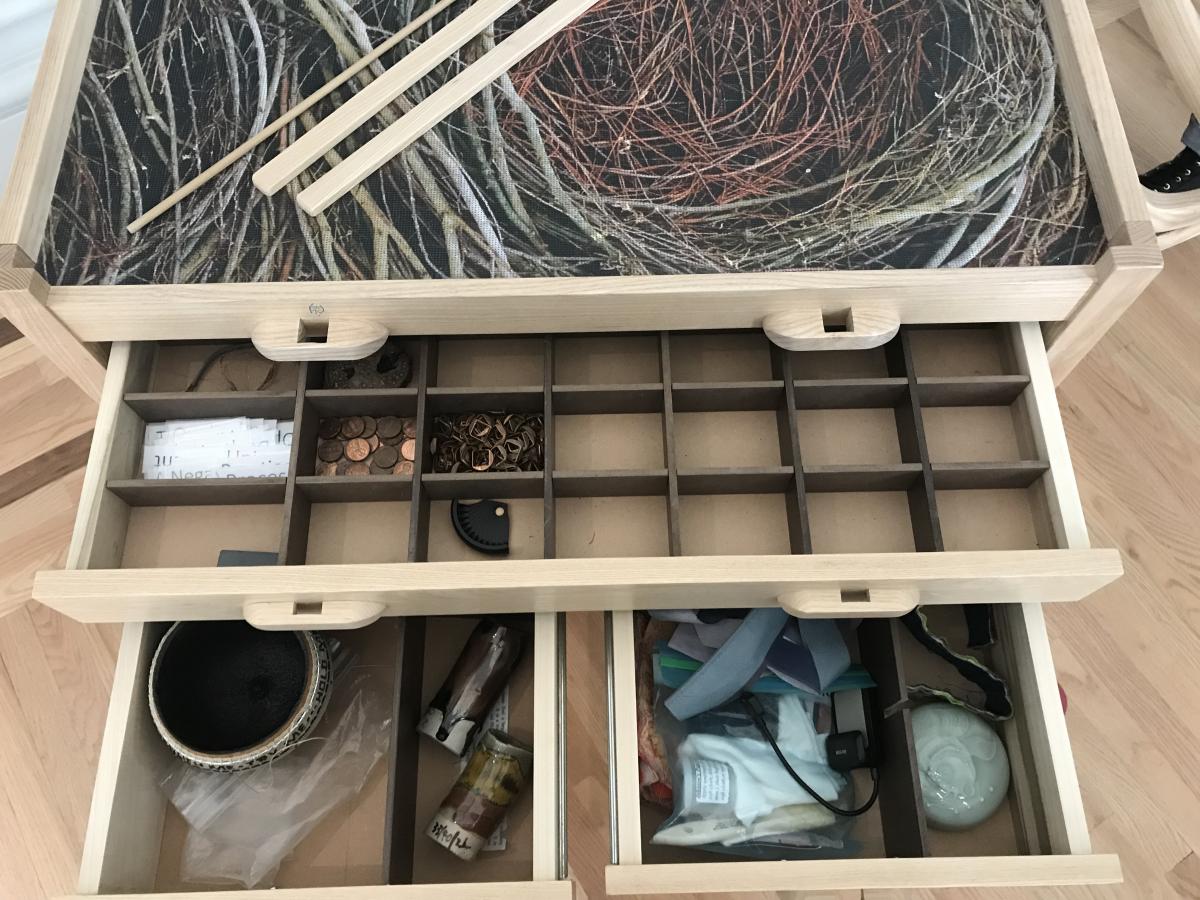
Tessa Berry, Jim Baxter, and Layla Saad with the Renwick Touch Cart they built together.

Being invited to touch objects in a museum is a rare and thrilling experience. Visitors to the Renwick Gallery are often curious about how craft objects are made, and feeling the grain of a particular type of wood or the weight of a ceramic vessel can spark insight about an artist’s process. Renwick visitors will now have the opportunity to explore those tactile connections thanks to a new mobile touch cart, funded by a generous gift from the William R. Kenan, Jr. Charitable Trust. What visitors may not consider while handling these wonderful objects, however, is the masterful work of craft right in front of them: the wooden cart itself.
That’s by design—the touch cart is first and foremost functional, envisioned with the needs of the educators who would be using it in mind—but the more you get to know the cart, the more you discover the immense amount of thought and care that went into making it. When Jim Baxter, Exhibits Specialist for the Renwick, describes the process of building the cart, he often frames it as an exercise in creative problem-solving. The cart needed to hold the touchable objects, with a lock to keep them safe. It had to be a certain height and width to pass through doors. It needed to roll and swivel easily. It had to have windows, and a handle. Working within these constraints, Baxter and his team experimented with novel solutions and practiced their own artistry.
The cart rewards exploration. Drawers and compartments of various sizes become homes for varied objects—from small medallions to large turned wood vessels—and there is even a secret compartment! The drawers are secured by Baxter’s innovative locking mechanism: two custom-carved vertical wooden slats and a horizontal dowel that cover the drawers. Baxter, who felt traditional locks would be too incongruous with the crafted feeling of the cart, describes it as a lock “built on psyche,” as the act of removing the dowels and the slats slowly reveals the treasures within.
Baxter will tell you immediately that he didn’t build the cart alone—the design process was a true collaboration with his intern Tessa Berry, an illustration student at Ringling College of Art and Design. Though Berry had never carved wood before this project, Baxter trusted her design sensibilities and put her in charge of making the cart’s handle. Berry looked to the Renwick’s collection for inspiration, and found her answer in the furniture of woodworker Sam Maloof.
“The whole idea behind it was, how comfortable can I make this wood?” said Berry of Maloof’s influence on her prototypes for the handle. The curve of her final design was inspired by Maloof’s Low-Back Side Chair, currently on view in the Renwick’s galleries.
The cart wasn’t complete without the laser cut signage on the front panel, designed by Baxter’s work study student Layla Saad, a Fine Arts Major at the GW Corcoran School of the Arts & Design. Saad designed lettering that felt consistent with the style of the cart and the history of the Renwick itself. Her final design includes curved lines that reference the shape of Berry’s handle.
Perhaps the most charming secret of the touch cart is how Baxter encouraged his mentees to leave their mark on it. Saad’s signature is hidden in plain sight—a small, wide-eyed character she draws regularly made its way subtly into one of the letters in her signage. And a little piece of Berry can be found inside the cart—Baxter found a doodle of hers on a table in the workshop, cut it out, and placed it in the secret compartment mentioned above.
In a museum dedicated to celebrating makers, the Renwick’s lovingly made touch cart is more than worthy of its surroundings.
Phoebe Hillemann is the Teacher Institutes Educator at SAAM.

















